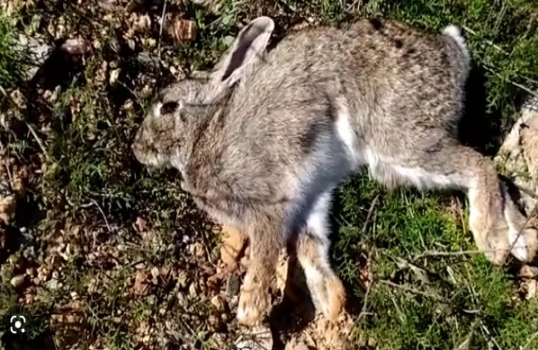In recent days, the Barcelona City Council has reported the appearance of more than a dozen dead rabbits in the city’s Turó Parc.
According to the report of the Wildlife Ecopathology Service (SEFaS) of the Universitat Autònoma de Barcelona (UAB), the animals died of a viral disease, which rules out the hypothesis of poisoning.
Turó Parc, located in the Sarrià-Sant Gervasi district, is one of the most emblematic parks in Barcelona.
It is characterized by its large number of green areas and its lagoon. However, since last summer, municipal authorities have detected an overpopulation of rabbits in the area.
More than a dozen dead rabbits in Turó Parc
The appearance of these dead animals has caused concern among citizens, especially animal lovers and wildlife defenders.
However, the authorities have assured that the situation is under control and have ruled out the hypothesis of poisoning.
It should be noted that rabbits are animals that can transmit diseases to other animals and humans.
Therefore, municipal and regional authorities have reiterated the importance of maintaining active surveillance of the rabbit population in Turó Parc.
The objective is to prevent the spread of disease and ensure the safety of citizens and other animals that may inhabit the area.
Viral hemorrhage, cause of death of four rabbits in Turó Park
The Barcelona City Council has so far confirmed that four of the more than twelve rabbits found dead have died in Turó Park due to viral hemorrhage.
The inspection and analysis tasks have been carried out jointly by rural agents of the Generalitat, the Guardia Urbana, the Public Health Agency of Barcelona (ASPB) and Parks and Gardens.
According to a report presented by the experts who have analyzed the situation, the hypothesis of poisoning has been ruled out.
They also determined that the virus detected does not pose a risk to humans, nor to other animals such as cats and dogs.
For its part, the Barcelona City Council had requested in advance to capture rabbits in order to control the population of the species in the city park.
The presence of rabbits in Turó Park is not new, since a year ago, local television in Barcelona reported on the proliferation of these animals in the urban park.
Likewise, the strategy of capturing specimens to reduce the rabbit population in the area continues.
The importance of maintaining active surveillance of the rabbit population in the area to prevent the spread of disease is reiterated.

